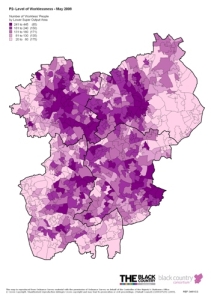I’m on secondment with Big Lottery Fund’s West Midlands team at the moment, helping them with their BIG Local work. If you know of any hyperlocal blogs or social media surgeries serving the following areas, please could you leave me a comment below, tweet to @thewmro or email me oliver.nicholls [at] wmro.org
- Bromford & Firs Estate (Birmingham)
- East Coseley (Dudley)
- Horsefair, Broadwaters, Greenhill (Kidderminster)
- Tividale – Grace Mary to Lion Farm (Sandwell)
- Gobowen, St. Martins, Chell Heath (Shropshire)
- Chell Heath & Fegg Hays (Stoke on Trent)
Thank you
Filed under: Birmingham, Dudley, Sandwell, Shropshire, Stoke-on-Trent, Sustainable communities, West Midlands, Worcestershire | Tagged: Big Lottery Fund, hyperlocal, local | 3 Comments »






 Inward investment is usually spread reasonably evenly between the West Midlands metropolitan areas and the shire counties. In 2009/10 the shire counties attracted the majority of inward investment projects (55%). See left.
Inward investment is usually spread reasonably evenly between the West Midlands metropolitan areas and the shire counties. In 2009/10 the shire counties attracted the majority of inward investment projects (55%). See left.

 This guest post was contributed by Christopher Styche from the
This guest post was contributed by Christopher Styche from the  The government is making £3 million available to help areas hardest hit by the recession find creative ways to reduce the negative impact empty shops are having on the high street.
The government is making £3 million available to help areas hardest hit by the recession find creative ways to reduce the negative impact empty shops are having on the high street.

 At the Observatory’s recent event to launch the
At the Observatory’s recent event to launch the  The
The 
 The
The  The
The 

